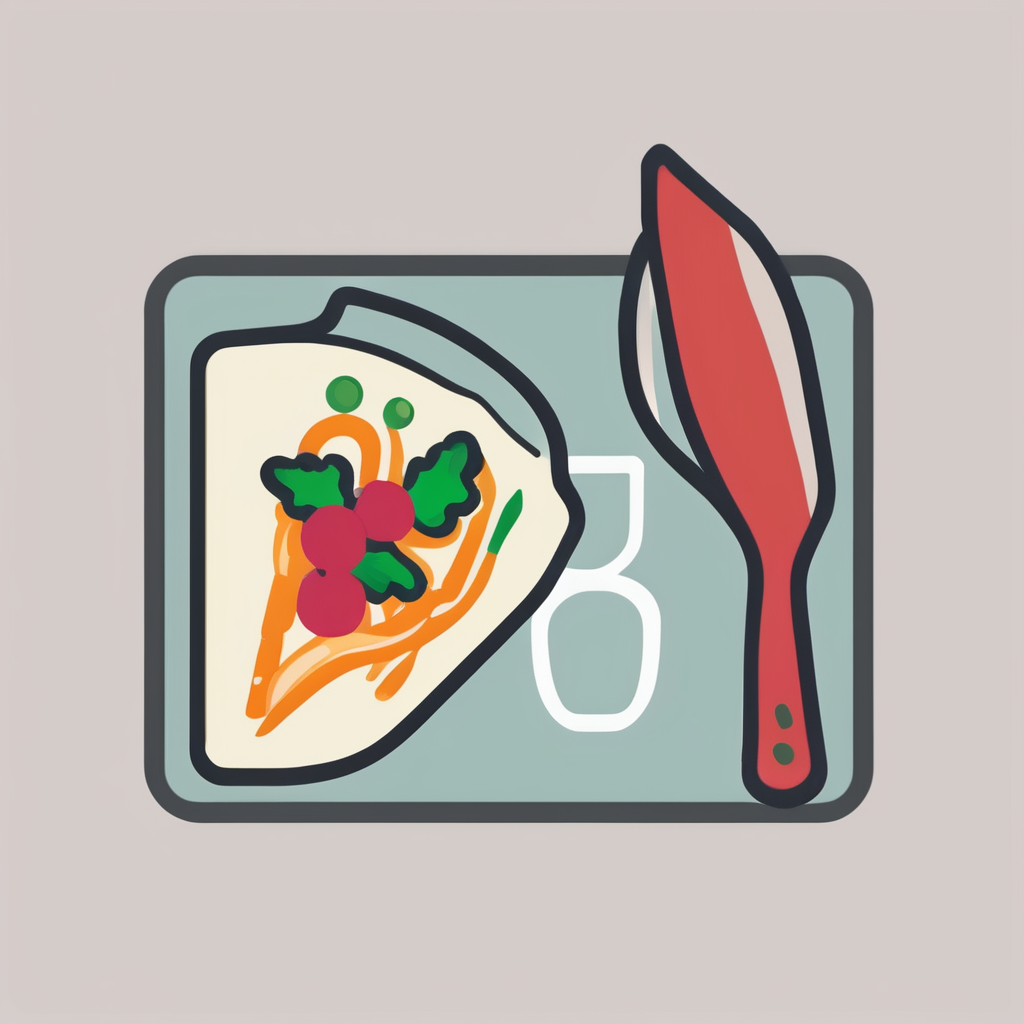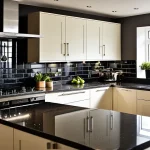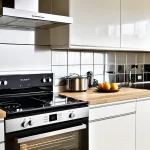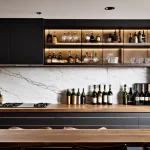Overview of Recent Changes in British Kitchen Trends
Recent years have seen a notable evolution in British kitchen trends, reflecting shifts in lifestyle and technological advancements. Over the past decade, British kitchen design has transformed from purely functional spaces to dynamic hubs that blend style, comfort, and innovation. One major development is the rise of open-plan kitchens, integrating cooking, dining, and living areas to accommodate modern family life and socializing.
Technology plays a crucial role in shaping current trends, with smart appliances and energy-efficient solutions becoming standard. This merging of tech and style means British homeowners now expect kitchens that are both aesthetically pleasing and highly practical.
Also read : How do lighting trends impact UK kitchen aesthetics?
In response to changes in working patterns, such as the growth of remote work, recent British kitchen trends emphasize flexible layouts and multifunctional furniture. Materials and finishes have also evolved, favoring durability and sustainability without compromising on style.
Ultimately, this evolution caters to readers’ expectations of a kitchen that is adaptable, well-equipped, and a reflection of their personal taste—all while maintaining a warm and welcoming atmosphere.
Also read : What role do UK kitchens play in the home renovation market?
Key Shifts in Kitchen Color Schemes
In recent years, kitchen color trends have notably shifted from bold, vibrant hues to more restrained and calming tones. Contemporary designs favor neutral and muted shades, providing a timeless and versatile foundation that complements various styles. This movement reflects a growing desire for spaces that feel welcoming and serene without overwhelming the senses.
A striking development within British kitchen colors is the rise of dark kitchens, where deep blues such as navy, alongside rich forest greens and charcoal greys, dominate. These darker palettes bring a sense of sophistication and depth, often paired with brass or matte black fixtures to create a harmonious yet dramatic effect. Dark kitchens, once considered unconventional, now firmly command modern interiors.
Furthermore, the influence of nature-inspired and earthy color palettes is evident in many modern kitchen palettes. Shades mimicking natural elements—from soft clay to muted sage—offer an organic appeal, fostering a connection between interiors and the outdoors. This trend supports a balanced aesthetic that aligns with sustainable and mindful living principles, answering the growing consumer demand for environments that nurture wellbeing and tranquility.
Evolution of Kitchen Layouts and Functionality
The transformation of kitchen layouts has profoundly shaped modern homes. One of the most significant advancements is the rise of the open-plan design, which merges the kitchen with living and dining spaces. This approach fosters social interaction, allowing family members and guests to connect seamlessly while cooking or relaxing. It also maximizes natural light, making kitchens feel larger and more inviting.
Central to this evolution are kitchen islands, which have grown in popularity due to their versatility. More than just extra counter space, islands serve as hubs for food preparation, casual dining, and storage. Many homeowners incorporate features like built-in appliances or seating areas, enhancing both functionality and style.
Adapting to recent lifestyle shifts, kitchens have morphed into multi-purpose zones that support home working and social activities. These spaces often include designated nooks for workstations or study areas while maintaining their culinary focus. In essence, functional kitchens now balance efficiency with comfort, catering to diverse household needs beyond traditional cooking tasks.
Material and Finish Trends in British Kitchens
British kitchens are embracing sustainable kitchen design with growing enthusiasm. Homeowners increasingly prefer natural and eco-friendly kitchen materials such as stone, wood, and composite surfaces. These choices not only support environmentally conscious living but also add character and durability to the kitchen environment.
A significant shift is evident in the popularity of worktop trends moving away from traditional polished surfaces. Matte finishes are taking precedence, offering a softer, tactile experience that reduces glare and fingerprints. This subtle texture provides a modern, sophisticated feel while complementing various design styles.
Additionally, combining different materials and finishes is gaining traction. Mixed textures—such as pairing wood cabinetry with stone or composite worktops—create visual interest and depth. This approach allows homeowners to personalise their spaces, blending rustic warmth with contemporary coolness. Cabinet finishes also reflect this trend, with matte and satin finishes replacing high-gloss for a more understated look.
These evolving trends showcase a move towards timeless, responsible, and tactile kitchen design that speaks to both aesthetic appeal and functional longevity. Embracing these elements ensures kitchens remain practical while feeling fresh and inviting.
Technological Advancements and Smart Appliances
Small but impactful innovations in kitchen technology have transformed the way we cook, store, and manage energy. Today’s smart appliances seamlessly integrate connectivity features, enabling a connected kitchen where devices communicate through Wi-Fi or Bluetooth. This interconnectivity allows for remote monitoring and control, making meal preparation more precise and less time-consuming.
One notable trend is the rise of hidden and integrated technology. For instance, charging stations are now built into countertops, allowing smartphones and tablets to recharge effortlessly during cooking. Voice activation has also become commonplace, permitting hands-free operation of ovens, dishwashers, and refrigerators, which enhances hygiene and convenience.
The impact extends beyond convenience; smart appliances optimize energy consumption by adjusting settings based on usage patterns, which benefits both the environment and household budgets. Additionally, advanced sensors in refrigerators help regulate temperature and humidity, preserving food freshness longer. These advancements underscore how smart appliances contribute not only to efficiency but also to a more intuitive and sustainable kitchen environment.
Noteworthy Brands and Influential Designers in Recent Trends
Exploring key players shaping modern British kitchens
British kitchen brands such as Wren, Magnet, and Neptune have established themselves as leaders by combining quality with innovation. Wren is particularly known for its affordable, stylish kitchens, while Magnet offers a broad range of customizable solutions that appeal to diverse tastes. Neptune, on the other hand, focuses on craftsmanship and timeless design, often inspiring trends with its emphasis on natural materials and classic finishes.
These brands work closely with kitchen designers who prioritize both aesthetics and functionality. Designers today are rethinking layouts to maximize space and light while incorporating smart storage and sustainable materials. The collaboration between brands and designers shapes evolving consumer preferences, blending practicality with style.
Industry awards and showcases play a critical role in elevating these trends. Recognition at events highlights innovative designs and emerging materials, influencing both retail offerings and homeowner choices. Such platforms not only celebrate excellence but also serve as a barometer for what’s trending, pushing British kitchen brands and kitchen designers to continuously innovate and set higher standards for the industry.
Period Comparisons and Notable Shifts by Year
Exploring the kitchen trend timeline reveals a clear evolution in design preferences. Before 2010, kitchens in the UK predominantly featured traditional layouts with emphasis on wood finishes and classic cabinetry. These years focused on functionality over form, reflecting a period when open-plan living was less common.
Moving into the 2015-2020 era, there was a striking adoption of sleek, minimalist aesthetics. Matte finishes, handleless cabinets, and integrated appliances became staples, signaling a shift toward modern convenience and clean lines. Homeowners increasingly favoured smart storage solutions, reflecting changing lifestyles that demanded efficiency alongside style.
Since 2021, notable innovations have accelerated. The emphasis has shifted to sustainability and personalization. Eco-friendly materials like reclaimed wood and energy-efficient appliances align with broader environmental concerns. Colour palettes have diversified, moving beyond neutral tones to bold, statement hues. Smart kitchen technology — from touchless taps to AI-powered appliances — is now commonplace, marking a significant inflection point in the year-by-year kitchen changes narrative.
This historical kitchen trends UK overview underscores not just aesthetic shifts but how evolving lifestyles and values shape our kitchens year after year.



